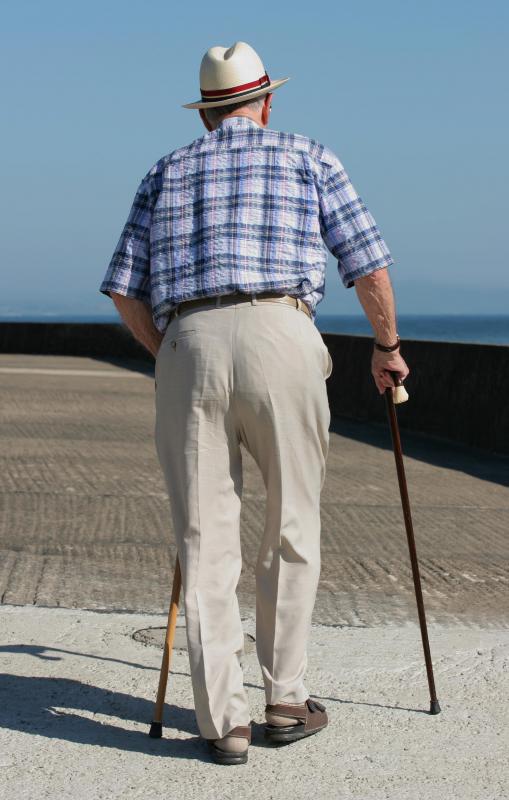At WiseGEEK, we're committed to delivering accurate, trustworthy information. Our expert-authored content is rigorously fact-checked and sourced from credible authorities. Discover how we uphold the highest standards in providing you with reliable knowledge.
What is the Popliteal Artery?
An artery is a type of blood vessel responsible in transporting oxygenated blood from the heart and distributing it to various tissues in the body. The popliteal artery is a blood vessel located behind the knee. Together with its many branches, it provides blood supply to the knee joints and to the muscles in the calf and thigh. The popliteal artery is deeply situated, frequently making it difficult to feel with the hand.
As the femoral artery, which comes from the upper thigh, enters the space at the back of the knee, called the popliteal fossa, it becomes the popliteal artery. From the popliteal fossa, it divides into many branches to deliver blood to the area around the knee. As it leaves the popliteal fossa, it divides into two arteries — the posterior tibial artery and the anterior tibial artery — providing blood flow to the lower leg and foot. The popliteal vein runs side by side with the popliteal artery, and carrys unoxygenated blood back to the heart.

Injury, damage, or occlusion of the popliteal artery may cause partial or complete blockage of blood flow to the lower leg and foot, resulting in difficulties walking. Symptoms of decreased blood supply to the lower leg often includes pain at rest or during walking and gangrene. Gangrene is the death of tissues, making the skin appear black and bad smelling, and if not treated early, may require amputation of the lower limb.
Some problems that may occur in this artery are a popliteal artery aneurysm (PAA) and popliteal artery entrapment syndrome (PAES). They are commonly seen in the elderly population, in smokers and in individuals with heart disease and diabetes.

A PAA is a weakening in the wall of the artery in the knee, causing the artery to balloon. Patients with PAA usually experience tingling sensations in the lower part of the legs. Most PAAs occur in both legs, and they are often associated with abdominal aortic aneurysms.
PAES occurs due to the anatomic relationship of the artery with the calf muscles. Since the popliteal artery is situated between the two heads of the gastrocnemius, or calf muscles, any abnormality in the calf muscles may compress the artery. Individuals suffering from PAES are usually young, healthy, and athletic males. Symptoms include pain in the calf and numbness in the foot during walking.
AS FEATURED ON:
AS FEATURED ON:

















Discuss this Article
Post your comments